Viewpoints: Research & Innovation
By Lance Larkin, Angela Wu, M.SAME, and Nicholas Josefik
An innovative fuel cell emergency vehicle developed by the U.S. Army Engineer Research & Development Center can provide exportable power, water, and a climate-controlled command center on a zero-emission platform to aid in humanitarian assistance and disaster relief efforts where sites lack utilities and infrastructure.
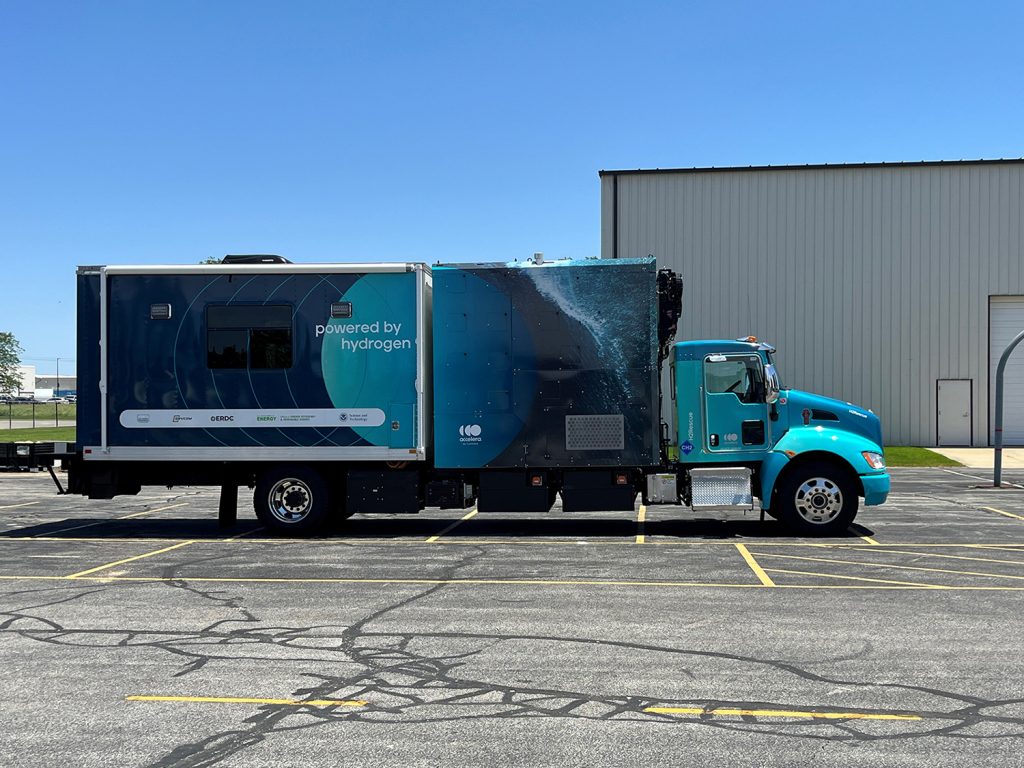
Engineers with the Department of Defense have developed a potentially groundbreaking new tool in supporting humanitarian and disaster relief efforts at austere sites lacking utilities or other enabling infrastructure.
Climate change has both exacerbated the magnitude of environmental disasters across the country and accelerated the frequency at which they devastate the same regions. Areas are often hit by different types of emergencies in quick succession, such as a large wildfire being followed by flooding. These compounding disasters pose challenges for emergency response operations, as capabilities must be able to contend with multiple obstacles at the same time yet be robust enough to perform in austere environments. Capabilities tailored for a specific disaster may no longer prove effective in a scenario where multiple compounded disasters have occurred in a short amount of time. Future solutions have to be flexible with the ability to adapt to these more frequent disasters and their evolving challenges. Accordingly, the federal government must respond with an equal or greater effort of climate change adaptation and mitigation.
A fuel cell-battery hybrid emergency vehicle, H2Rescue was developed to address the need for a larger capacity in climate adaptation.
The U.S. military often is requested to dispense humanitarian assistance and disaster relief to affected sites that have no electricity, water, heat, or emergency communications. To meet the needs of these missions, compounding as natural disasters increase in frequency across the United States and internationally, a new innovation, H2Rescue, developed by the U.S. Army Engineer Research & Development Center (ERDC), has the ability to export power, supply water, and furnish a warming and cooling command center, which provides a strong option for disaster recovery operations. Its capabilities showcase how resilience solutions can be developed that are able to meet the challenges of increasing climate-change-driven events and also be flexible enough to answer the needs of a compounded disaster.
Collaborative Effort
A fuel cell-battery hybrid emergency vehicle, H2Rescue was developed to address the need for a larger capacity in climate adaptation. The prototype was built by ERDC’s Construction Engineering Research Laboratory, Accelera by Cummins, and a consortium of government agencies that included the Department of Energy’s Hydrogen & Fuel Cell Technologies Office and Vehicles Technologies Office, the Army’s Ground Vehicle Systems Center, the Department of Homeland Security’s Science & Technology Directorate, and the U.S. Naval Research Laboratory.
When discussions for creating and testing this zero-carbon emissions emergency vehicle began, there simply was no blueprint to follow, no template on which to build. During brainstorming sessions, researchers concluded that the need for appropriate environmental disaster response necessitated a mobile command center. The prototype vehicle needed to be capable of entering austere environments, setting up operations for communication, and independently generating electricity during recovery efforts. H2Rescue was engineered to provide short-term preparedness and long-term resilience in disaster scenarios.
Unlike a combustion engine, which creates greenhouse gases like nitrogen oxides, particulate matter, and carbon monoxide, the fuel cell delivers clean energy (producing only water vapor and heat as byproducts). The truck can export 25-kW of energy for 72 hours without the generation of any greenhouse gas emissions.
Mobile Command
In typical emergency response operations, a truck must bring a standalone generator, with a second vehicle transporting a tank of diesel fuel to power the generator. This approach can encounter challenges in the austere environment of a disaster response mission, when access for two transports can be limited. It also relies on frequent replenishments of fuel to continue operations, lowering its overall resilience. H2Rescue, using groundbreaking efficiency, combines power export with its own hydrogen fuel cell operations, eliminating the need for extra transport. The fuel cells generate water in the exhaust produced during any operations, whether from driving or stationary power export. This water can be used for washing, putting out fires, or even watering crops.
The vehicle is a Department of Transportation roadworthy class 7 medium-duty boxed truck, weighing approximately 33,000-lb. It carries a maximum of 176-kg of hydrogen at 700-bar, which is enough to travel approximately 1,500-mi on a full load. The fully fueled H2 Rescue can use the hydrogen for a longer driving range or provide more power export in whatever configuration is necessary for the environmental disaster. The boxed bed of the truck is climate controlled and can act as a mobile command center for a warmed or cooled space during an emergency.
The proton exchange membrane fuel cells in the truck generate electricity as hydrogen is pushed through the membrane. This creates an electrolytic reaction as oxygen from the air moves across the cell membrane. Unlike a combustion engine, which creates greenhouse gases like nitrogen oxides, particulate matter, and carbon monoxide, the fuel cell delivers clean energy (producing only water vapor and heat as byproducts). The truck can export 25-kW of energy for 72 hours without the generation of any greenhouse gas emissions.
During driving mode, H2Rescue operates in a hybrid configuration. The electricity created by the fuel cell is used to charge the battery system, which provides power for driving the vehicle or exporting electricity to support emergency operations. The vehicle begins driving in battery mode until the range drops below a 40 percent charge. At that point, the hydrogen fuel cell begins producing power to maintain the charge in the batteries for the duration of the drive. The hybrid configuration allows for the vehicle batteries to quickly respond when the accelerator is pressed; this eliminates lag time that may occur waiting for the fuel cell to provide more power.
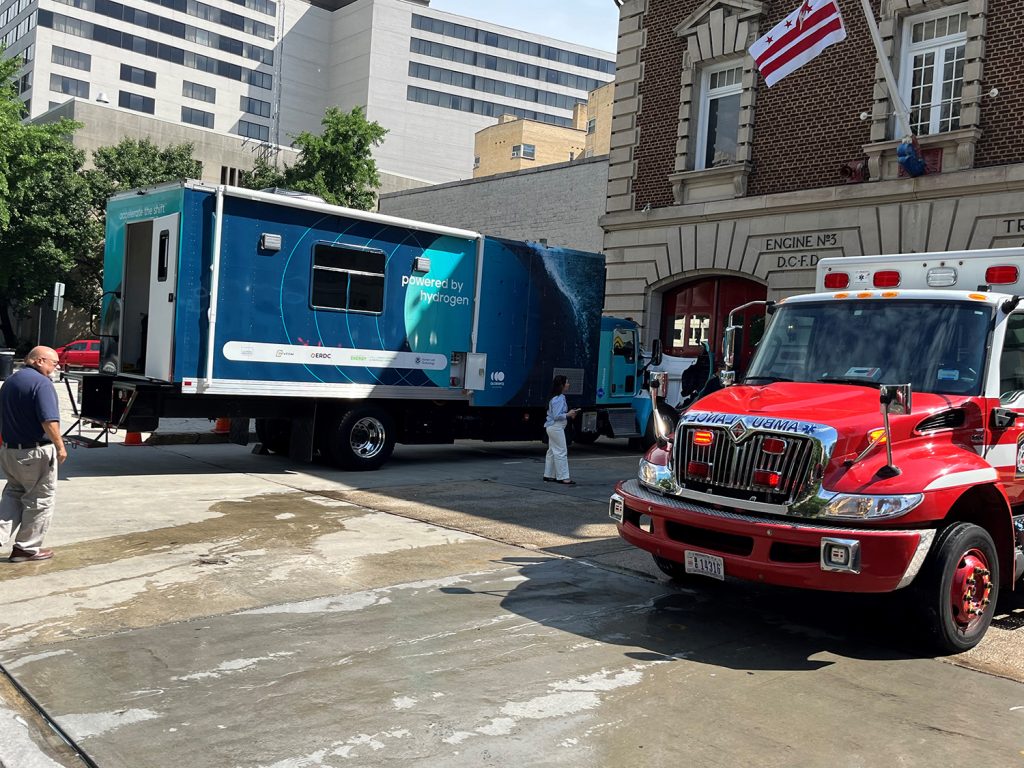
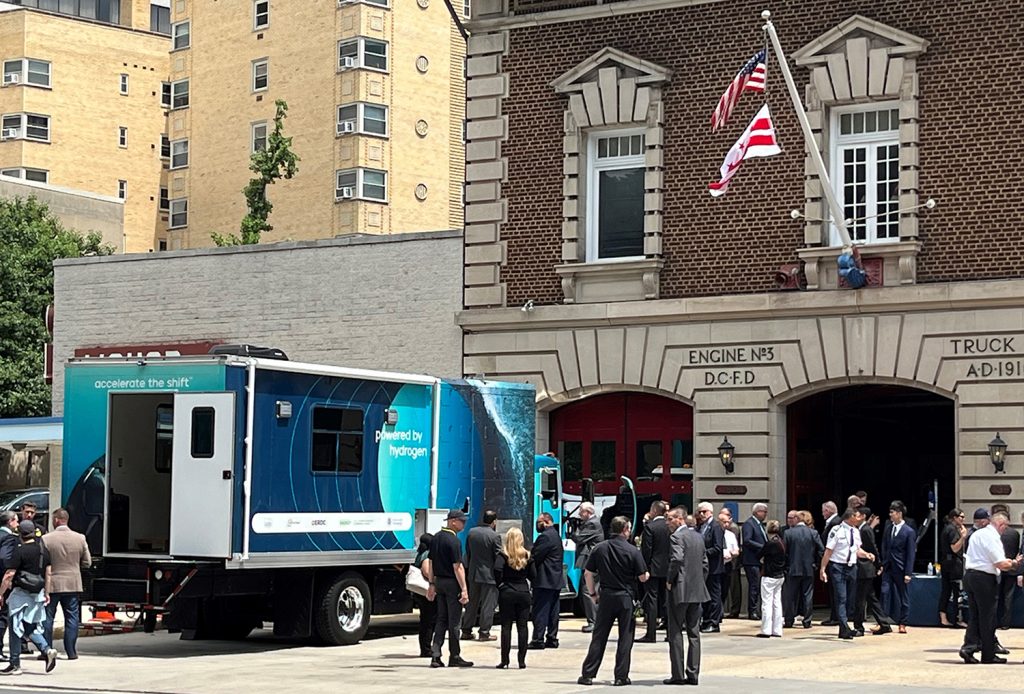
Demonstrating Capabilities
In 2023, H2Rescue was tested during two demonstrations by driving 180-mi roundtrip with the goal of exporting 25-kW of electricity over 72 hours at set locations. With the capacity to travel into disaster areas deprived of electricity, the vehicle provides export power for tools and equipment while also serving as a climate-controlled command center.
Current plans for the expansion of this project include up to five demonstrations at multiple sites in 2024 and ongoing development of the water collection system. In May 2024, the project was presented at the World Fire Congress in Washington D.C., where it received positive feedback from government officials and emergency response managers. Attending firefighters described how the exhaust created during operations could provide a generative source of water, extending how long fires can be fought if the technology was adapted to pumping trucks or tankers, which are especially critical at rural fire stations and for wildfire units.
The prototype vehicle needed to be capable of entering austere environments, setting up operations for communication, and independently generate electricity during recovery efforts.
The feedback about the use of water generation from the World Fire Congress indicates an opportunity for having commercial options with modular components (for instance, the command center can be switched out for large water tank). Using H2Rescue in austere environments that include a lack of electricity, such as after hurricanes and flooding, or in remote locations for military operations, will provide critical communications from the command center. Both capabilities are currently viable with some further refining of the prototype vehicle.
The building of modular components should also include an option for generation of potable water, although the tank may not need to be as large as that of a firefighter’s pumping or tanker truck. Researchers are currently working on an option for remineralizing the deionized water that is generated during fuel cell operation to create potable water. The components of the vehicle function well for export power, but to gather enough drinkable water for functional use in an emergency, the development of a water cleanser and a 200-gal to 300-gal tank would have to be added to the next iteration. In the meantime, another planned demonstration for this year is to drive H2Rescue to its limit, theoretically 1,500-mi.
Future Response
To overcome the hurdle for technology transfer from development and testing to commercial production, the prospective buyers for this emergency response vehicle must be able to tailor the technology to their unique needs. The demonstrations to date have shown that H2Rescue can enter a disaster zone and export enough electricity to power the equivalent of approximately 10 to 15 homes for three days while providing a climate-controlled command center for communications. Other demonstrations have emphasized that there is interest from emergency responders in water pumpers for putting out fires, or a larger potable water exhaust tank. Researchers continue to develop the capabilities of the prototype.
With an upcoming demonstration opportunity to discover the maximum range on a full load of hydrogen, the latter use cases might provide greater impetus for production with switchable components—creating more demand for this carbon neutral emergency response vehicle.
As the military services and local response organizations seek ways to enhance recovery and resilience efforts against increasing climate-change driven natural disasters, innovative vehicles such as H2Rescue can provide critical capabilities for the future.
Lance Larkin is Research Anthropologist, Angela Wu, M.SAME, is Research Civil Engineer, and Nicholas Josefik is Mechanical Engineer, Construction Engineering Research Laboratory – U.S. Army Engineer Research & Development Center. They can be reached at lance.l.larkin@usace.army.mil; angela.wu@usace.army.mil; and nicholas.m.josefik@usace.army.mil.
Article published in The Military Engineer, September-October 2024
More News from TME
-
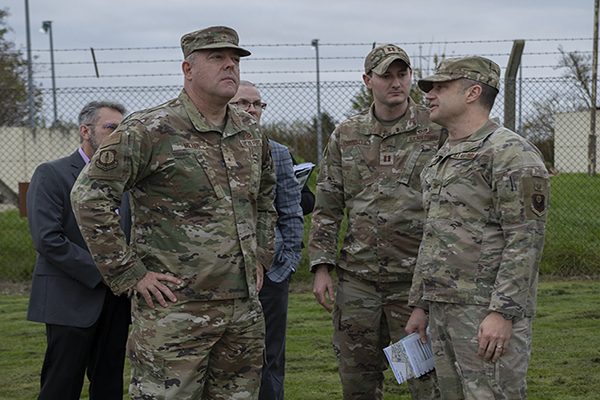
Leading the Way: Partnering for Resiliency and Readiness
TME Interview with Brig. Gen. Patrick Miller, P.E., F.SAME, USAF Commander, Air Force Civil Engineer Center -
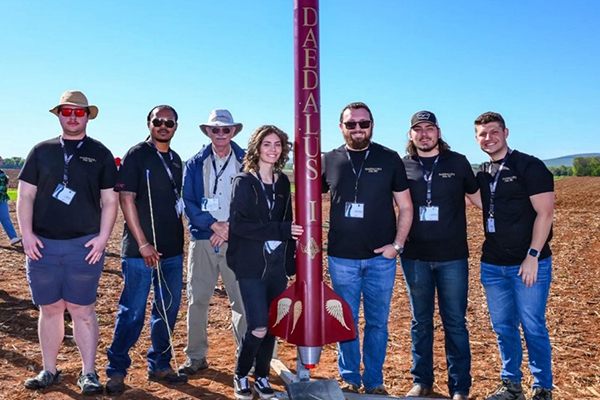
Developing Tomorrow’s STEM Workforce Through Partnership
TME recently interviewed leaders of the Panama City Post about paying it forward, their repertoire of STEM outreach, and the benefits of collaborating with similar-minded professional organizations. -

Electrifying Solutions for Military Installations
As military installations implement electrification measures into the future, the challenges they face will not just require innovative technology solutions but embracing a holistic delivery approach implemented early in projects.